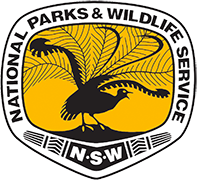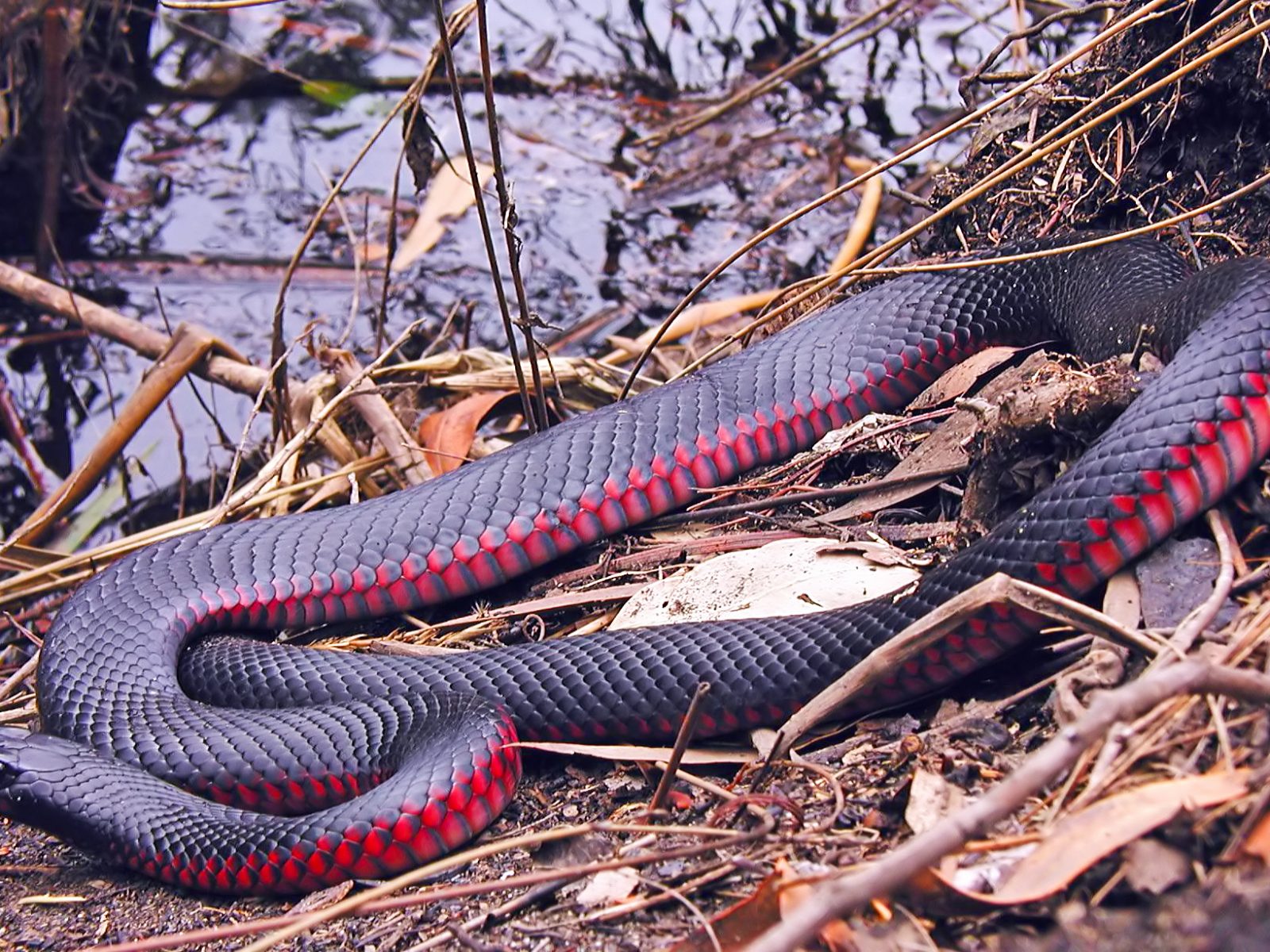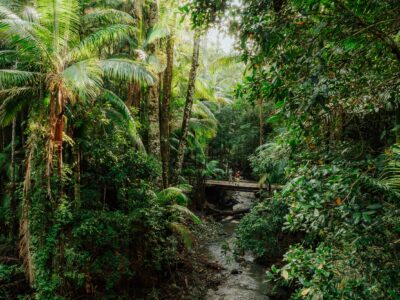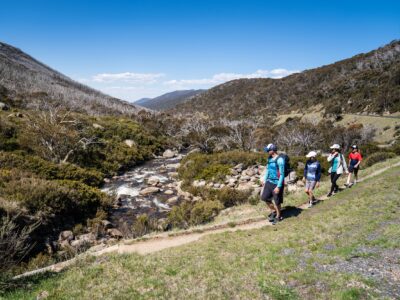Australia’s famous for its wild landscape and even wilder animals. Just some of the reasons Australia has become an international obsession are its massive hairy spiders, Tassie devils and our beloved Aussie icon Steve Irwin (RIP). The key to keeping your adventures fun (rather than deadly) is avoiding native animals and being clued into their environment and behaviours; so, with that in mind, here are four of the most common critters and what to do if you do run into them.
-
Leeches
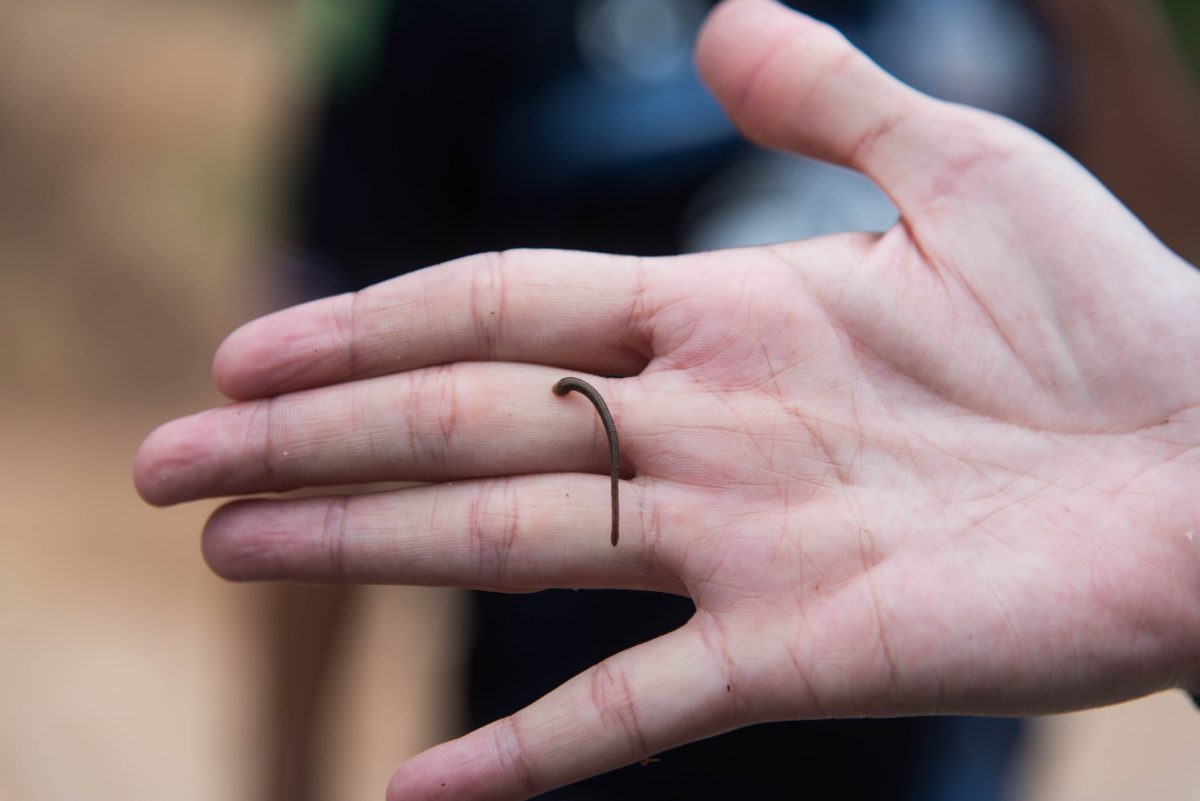 Photo Information
Photo InformationTropical leech biting human hand
Getty Images
Everyone who’s been walking or swimming in some suspicious water on a camping trip has a leech story involving terrified squealing, bloody socks and full-on squeamishness. But as shudder-inducing, as the things are, leeches are actually not that harmful! These sluggy bloodsuckers have been helping humans for ages, from Ancient Egyptians using them to ‘purify’ their blood to present-day patients recovering from surgery.
Leeches can be found wherever it’s damp or wet, so rivers, lakes, waterfalls, creeks and ponds are all breeding grounds for the slimy little guys. To keep them off your pristine skin, wear a long-sleeved shirt and pants and tuck your pants into your socks (it’s unstylish but very effective). As an extra measure, use DEET repellent on your skin, especially if it’s exposed.
So what happens if they actually sink their teeth into you? Your first reaction will undoubtedly be, ‘Oh! Get it off, get it off!’ – but don’t panic. They’re usually easy to get off, or will fall off after they’ve had their fill (about 30 mins). If you’re desperate to get them off, find the head end (which is the skinny end) and push it sideways with your fingernail until it releases the suction, and the same with the other end till it releases. You’ll bleed immediately but that’s fine. Make sure you use disinfectant afterwards and keep any wounds clean and covered to avoid infection. Lastly, watch out for any large red marks or rashes because some people are allergic to leech bites.
Ranger Tip: Discovery guide Andrew Turbill, reckons you should treat a leech with these three simple steps: pick, roll and flick. Pick up one end, roll it over (the leech should curl up into a ball), then flick it as far away from you as you can. Hand sanitiser is also known to work on getting rid of them too.
-
Ticks
 Photo Information
Photo InformationTicks range in size from microscopic to over a centimetre long
Shutterstock
Ticks tick all the boxes when it comes to irritating pests – annoying, itchy and sometimes dangerous. They’re most common in the summer, but the full tick season stretches from September through to the end of February. They’re especially common in cooler rainforests and grasslands because they hate high temperatures and low humidity.
Tick bites themselves aren’t very severe (apart from being itchy and annoying), but for some people, ticks can cause allergic reactions, or one nasty disease called tick paralysis – for more info see the NSW Health webpage on ticks. Paralysis ticks have a particularly noxious poison that causes fatigue and immobilisation of limbs, stopping your adventure in its tracks. But don’t freak right out, they’re quite rare. Use tick freeze-off spray or seek medical attention to help remove them safely, and definitely don’t douse yourself in nail polish or lighter fluid like some urban legends recommend.
The best approach is to avoid them altogether, but that’s easier said than done so know your enemy: ticks don’t jump onto hosts or fall from trees like some kind of parasitic paratrooper. They climb to the top of vegetation and then wave their forearms to latch onto passing mammals with delicious warm blood. To avoid bites, ensure you’re wearing full-length clothes that cover your skin, tuck everything in wherever possible, and use an insect repellent that contains DEET for any gaps where your skin’s exposed. Before you go inside carefully check for ticks, including your neck, scalp, groin and underarms.
Did you know: Tick bites can mysteriously cause an allergy to the meat of mammals. Stories of people being afflicted by swelling and difficulty breathing after a meaty meal are becoming more and more common.
-
Snakes
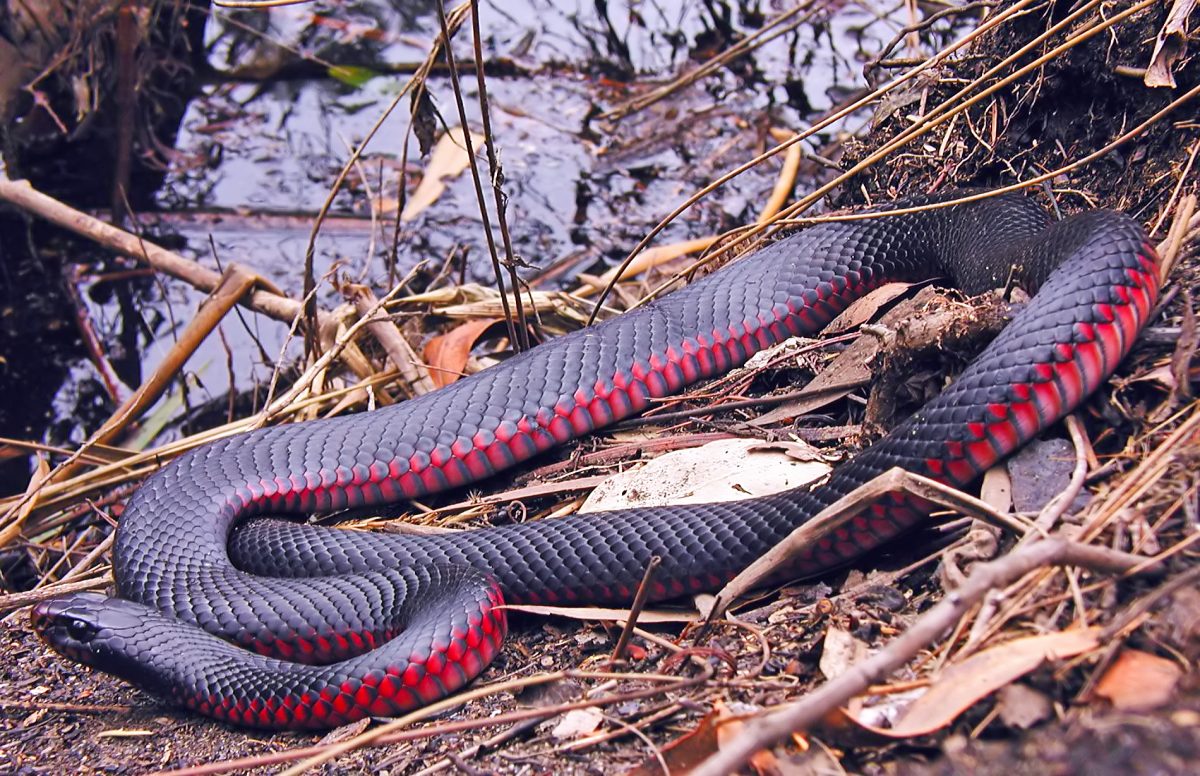 Photo Information
Photo InformationA red-bellied black snake recently shed in Royal National Park
Royal National Park
Getty Images
Good news: snakes aren’t hungry for your blood and won’t chase you as long as you don’t get too close. They just want to be left alone. Australia has 140 varieties of land snake, 32 species of sea snakes, but only 12 can kill you.
Mainly, you’ll only come across snakes during the warmer months (usually Spring and Summer) since they’re cold-blooded. If you do come across one, try not to threaten or surprise it. Most snakes aren’t interested in biting anything bigger than they can swallow and don’t perceive humans as food. The exception? Eastern Brown snakes and tiger snakes are notoriously bad-tempered and aggressive. If you spot one quietly and slowly back away.
Did you know? Almost 1 in 5 snakebites happen when people provoke the snake.
Snakes like to hide where they can’t be seen, which includes holes in the ground, rock crevices, fallen logs or long grass. So be careful where you put your hands or feet and sit down. Snakes can’t hear very well, but can sense vibrations in the ground. When walking in the bush, make noise and stomp your feet to scare off any nearby snakes.
If someone does get bitten, the first thing to do is remain calm and reassure them. As a rule of thumb, never try anything you’ve seen in a movie. Definitely don’t try to catch the snake – get out of its way! You can look for ID markers – like body colour and length, eye colour, pupil shape, location of eyes on the head, shape of head or any distinctive patterns or features – this is helpful information for the medics to know.
Did you know? Snakes are protected in NSW by the Biodiversity Conservation Act 2016.
The best advice to treat a snake bite is: lie the person down and try to move them as little as possible while you call OOO for an ambulance. If you’ve been smart and packed a first aid kit – localise the snake bite – wrap a bandage directly over the bite site, then apply a pressure bandage along the length of the limb (like in this St Johns: How to treat a snake bite video) – overlap 1/3 of the bandage and wrap it as high as it can go, apply it tight enough (same tightness for a sprain) but not so tight it cuts off circulation. Mark the site if possible. Then splint the limb including the joints on either side of the bite. Write down the time of the bite and when the bandage was applied.
If you’re in an area without roads, send some of your party back up the track to find service so you can contact 000 immediately and await instructions. The Emergency + app will be able to get your GPS location from your smartphone – highly recommend this app.
-
Spiders
 Photo Information
Photo InformationFunnel-web spider on a tree
Shutterstock
Australian spiders have a fearsome reputation and they are in fact, the most widely distributed venomous creature in Australia. Unfortunately for NSW, the two deadliest Aussie spiders, the funnel-web and the redback spider, are both found in our state – just our luck!
But before you panic and plan the rest of your life indoors, hear this: spider bites aren’t as common as people think, most aren’t venomous and spiders are actually less life-threatening than snakes, sharks, or even bees. Phew! Spiders generally stick to themselves if left alone, and antivenom for both the funnel-web and redback spider has been available for decades, meaning no fatalities have been recorded since then. This said, if you are bitten by one of our eight-legged mates, here are a few first-aid tips.
Firstly, stay calm and call triple zero (000) for an ambulance. The Emergency + app on your phone will help to get your location, but remember, if there’s no mobile coverage you won’t be able to reach triple zero. So, carry a PLB (Personal Locator Beacon) with you on every multi-day walking or camping trip – PLBs are equipped to send a distress signal with your location to Search and Rescue operators over dedicated radio frequencies.
Firmly bandage the affected area and splint if possible. Make sure the person lies still (this helps slow the venom moving through the body). Mark the bite site if you know it, and write down the time of the bite (and the time the bandage was applied) and wait for the ambulance.
It’s also a good idea to try and trap or photograph the spider so you can take it with you to the emergency room. This helps doctors to know what kind of spider it is, and what kind of care you’ll need.
So now you’re well versed in some of our creepiest critters. But don’t let it scare you off. With these precautions, you’ll be able to tackle Australia’s bush and return safely with your mates with great yarns to share.
Remember: NSW National Parks are natural unpredictable environments. Plan your trip with our tips here, be prepared for all weather conditions, and always check park alerts before setting out.
